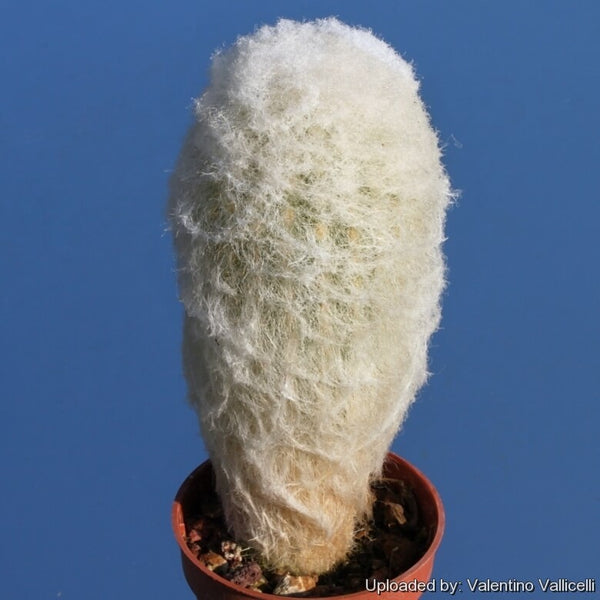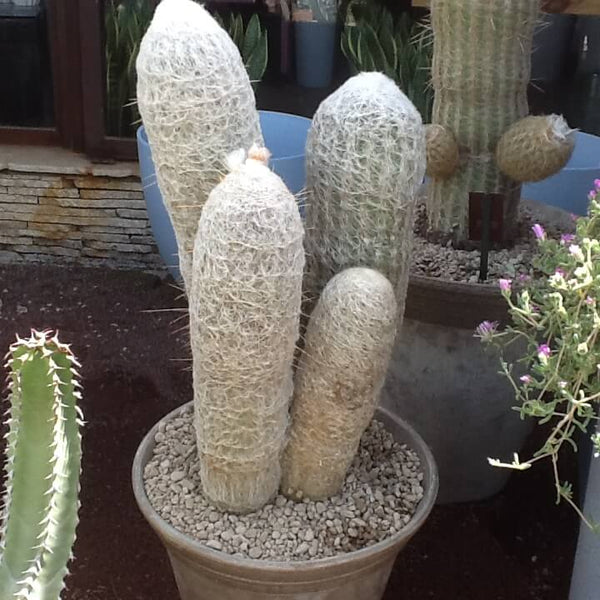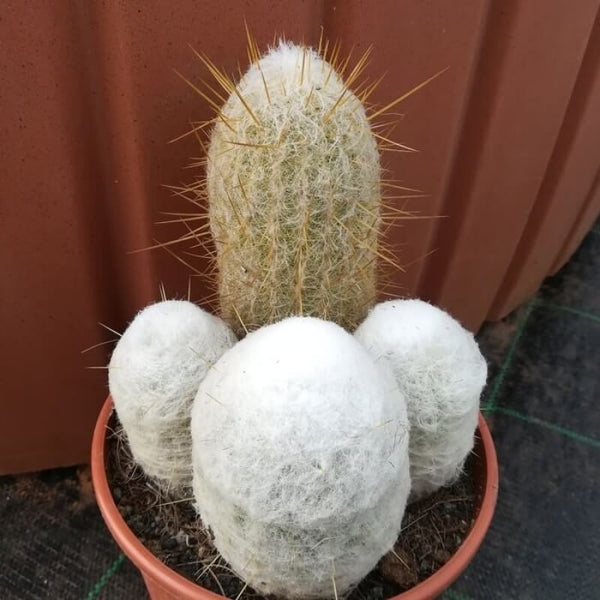Espostoa melanostele (Peruvian old lady/man) - 5 seeds
Espostoa melanostele is a species of rare, long-lived, slow-growing plant in the family Cactaceae. The plant is not only used for its fruit, but also grown for decorative qualities, such as its yellow flowers and its white ''fleece''.
Commonly called the Peruvian old man/lady cactus is native to Bolivia and Peru where it is found growing in rocky mountain ranges and valleys. The main stems of E. melanostele can grow up to 7 feet tall in nature, but typically only reach 10 inches tall when potted. Each stem is covered in thin yellowish spines that hold a large amount of wool on the surface. Flowers bloom in spring and summer and are white, nocturnal, and usually 2 inches in diameter. Parodia leninghausii is grown as an ornamental plant for its attractive appearance. The species is now considered endangered due to over collection and its slow growth rate. Espostoa melanostele grows best in full sun to partial shade while sitting in well-draining soils. Water the plant adequately during summer and keep dry during winter as it is prone to rot. Allow the soil to completely dry out in between waterings. USDA plant hardiness zones 9b to 11b.
HOW TO GROW?
Espostoa melanostele seeds require consistent moisture and humidity to germinate, but the soil should not remain soaking wet. Cloning boxes, ziplock bags, and other containers that retain humidity are ideal to store sown pots. Use a well-draining sterilized soil mix. Seeds should be sown directly on top of the potting mixture and lightly covered with a thin layer of sand or potting mix, just enough to cover the seeds. Germinating pots should be kept indoors, out of extreme light and heat. Ideal germination temperatures range from 75°F to 85°F. Germination typically takes 2 to 4 weeks to occur. Even with optimal conditions, germination may be slow and sporadic.






